I would like a TextItem that maintains a constant position on the graph while scaling the y-axis, essentially the same functionality as legend only as a TextItem where I can change the text as needed. I cannot figure out how to do this. Any suggestions welcome.
This example shows the problem. On the lefthand graph, scaling the y-axis causes the text to move whereas on the righthand graph the legend stays in a constant position as you scale. I would like the position of the textItem to be defined like the legend position, in a constant position relative to the graph window. Alternatively if someone knows how to change the format of the legend and update the text that would also work, but from my reading of the documentation this is not possible.
import pyqtgraph as pg
from PyQt4 import QtGui
import numpy as np
import sys
def main():
app = QtGui.QApplication(sys.argv)
widg = QtGui.QWidget()
widg.move(100, 100)
pg.setConfigOption('background', 'w')
pg.setConfigOption('foreground', 'k')
pgWidg = pg.GraphicsLayoutWidget()
pgWidg.resize(750, 250)
graph1 = pgWidg.addPlot(row=1, col=1)
graph2 = pgWidg.addPlot(row=1, col=2)
curve1 = graph1.plot(y=np.sin(np.linspace(1, 21, 1000)), pen='k')
curve2 = graph2.plot(y=np.sin(np.linspace(1, 21, 1000)), pen='k')
graph1.addItem(curve1)
graph2.addItem(curve2)
graph1.setMouseEnabled(x=False, y=True)
graph2.setMouseEnabled(x=False, y=True)
graph1Text = pg.TextItem(text = 'A1', color=(0, 0, 0))
graph1.addItem(graph1Text)
graph1Text.setPos(150, 1)
legend = graph2.addLegend()
style = pg.PlotDataItem(pen='w')
legend.addItem(style, 'A2')
grid = QtGui.QGridLayout()
grid.addWidget(pgWidg, 0,0)
widg.setLayout(grid)
widg.show()
sys.exit(app.exec_())
if __name__ == '__main__':
main()

